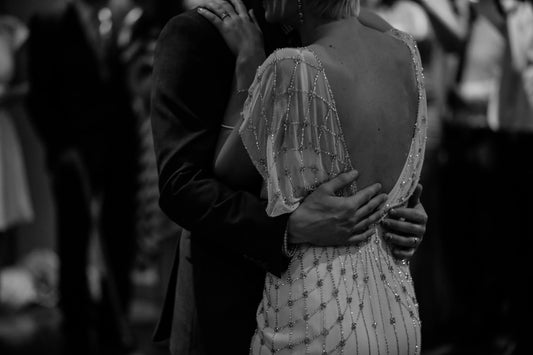Jewelry has captivated humanity for millennia, transcending mere adornment to become a captivating symbol of power, beauty, and cultural identity. Embark on an enchanting journey with us as we delve into the glittering annals of time, exploring the prehistoric origins of jewelry and its awe-inspiring evolution across diverse civilizations.
From the exquisite artistry of the Egyptians and Mesopotamians to the breathtaking opulence of the Renaissance, each era unfolds a unique story of creativity, craftsmanship, and the enduring human desire for beauty. We'll uncover the dazzling secrets of the Greeks and Romans, marvel at the bold styles of the Goths, and witness the remarkable resurgence of splendor during the Renaissance.
Prepare to be mesmerized by the rich tapestry of jewelry's historical evolution. Join us as we unravel the stories whispered by each precious stone and intricate design, and discover the remarkable legacy left behind by these fascinating civilizations.
Ancient Beginnings
1- Prehistoric Origins:
In the vast expanse of time, long before written records, jewelry had its humble beginnings in the prehistoric era. Despite the lack of historical documentation, archaeological discoveries provide valuable insights into the earliest forms of adornment and their significance in prehistoric societies.

Natural Materials as Adornments: Prehistoric humans utilized materials readily available in their surroundings to create jewelry. Shells, bones, animal teeth, and stones were among the first natural elements transformed into wearable art. These materials were often shaped, polished, or strung together to fashion necklaces, bracelets, and anklets. They served not only as decorative items but also as symbols of status, protection, and spirituality.

String of Beads
Date: circa 3650 –3100 B.C.
Material: Lapis lazuli, travertine (Egyptian alabaster)
Period: Predynastic, Naqada II–Naqada III
Symbolism and Beliefs: Prehistoric jewelry held deep symbolic meaning. Many pieces were believed to possess spiritual or magical properties, providing protection, good fortune, or fertility. Certain amulets and pendants featured animal motifs, representing the strength and qualities of specific creatures. The belief in the power of these symbols infused the jewelry with significance and served as a form of personal and collective expression.

Period: Predynastic, Naqada III
Material: Carnelian, garnet, quartz, glazed steatite
Social Status and Identity: Jewelry played a role in distinguishing social status within prehistoric communities. Elaborate and intricately crafted pieces often belonged to individuals of higher rank or leadership positions. These ornaments acted as markers of prestige, conveying power and authority within the group. Conversely, simpler jewelry items were more common among the general population.

Craftsmanship and Techniques: The craftsmanship exhibited in prehistoric jewelry is a testament to the ingenuity and resourcefulness of early humans. They employed various techniques, such as drilling, carving, and stringing, to manipulate raw materials into wearable forms. Primitive tools, such as flint or bone implements, were used to shape and refine the jewelry pieces. The level of intricacy achieved by prehistoric artisans is remarkable, considering the limited resources available to them.


Preservation and Discovery: The survival of prehistoric jewelry is due to several factors, including the preservation of materials in archaeological contexts. Organic materials, such as bone and shell, have endured in certain environments, providing archaeologists with invaluable insights into prehistoric adornments. Excavations, cave discoveries, and archaeological sites have revealed exquisite examples of prehistoric jewelry, shedding light on early human creativity, symbolism, and cultural practices.

The ancient land of Mesopotamia, located in the fertile crescent between the Tigris and Euphrates rivers, was home to advanced civilizations that left behind a rich legacy of jewelry. Let's delve into the fascinating world of Mesopotamian jewelry and explore its unique characteristics and cultural significance.

Precious Materials: Mesopotamian jewelry incorporated a wide range of precious materials, reflecting the wealth and opulence of the civilizations that thrived in the region. Gold, silver, and precious gemstones, such as lapis lazuli and carnelian, were highly prized and frequently used in the creation of jewelry. These materials were often sourced through trade networks, demonstrating the interconnectedness of ancient Mesopotamia with other civilizations.

Material: Gold, lapis lazuli
Intricate Metalwork: Mesopotamian jewelers were skilled metalworkers, employing various techniques to create intricate and elaborate designs. They used techniques like filigree, granulation, and repoussé to shape and embellish their jewelry pieces. Filigree involved twisting and soldering fine metal wires to create delicate and intricate patterns, while granulation involved fusing tiny metal granules to the surface of the jewelry. Repoussé, on the other hand, involved hammering metal from the reverse side to create raised relief designs.

Sumerian; Necklace; Metalwork-Ornaments
Material: Gold, lapis lazuli
Symbolism and Mythology: Mesopotamian jewelry often featured symbols and motifs that held deep cultural and religious significance. For instance, the rosette symbolized fertility and divine protection, while the crescent symbol represented the moon god Sin. The winged disk, associated with the sun god Shamash, signified divine protection and power. These symbols connected the wearer to the gods and conveyed messages about their beliefs and social status.

Beadwork and Inlay Techniques: Beadwork was a prevalent feature of Mesopotamian jewelry. Beads made from various materials, such as precious stones, glass, and ceramic, were meticulously crafted and strung together to create necklaces, bracelets, and pendants. In addition, jewelry pieces often featured intricate inlay work, where gemstones or shells were set into metal or other materials, creating colorful and eye-catching designs.

Personal Adornment and Status: Jewelry in ancient Mesopotamia played a significant role in personal adornment and social status. Elaborate and finely crafted jewelry was associated with the elite and those in positions of power, such as rulers and priests. It symbolized wealth, status, and authority within society. The quality and quantity of jewelry worn by an individual served as an indicator of their social standing.

Photo By Osama Shukir Muhammed Amin FRCP(Glasg) / CC BY 4.0
Amulets and Talismans: Amulets and talismans held great importance in Mesopotamian culture, and jewelry was frequently worn for protective purposes. Amulets in the shape of animals, deities, and symbols were believed to provide supernatural powers and ward off evil spirits. These protective charms were often made from precious metals and gemstones and worn as pendants or incorporated into jewelry designs.

Funerary and Burial Practices: Jewelry was also significant in Mesopotamian funerary practices. The deceased were often adorned with jewelry and buried with their precious belongings, including ornate necklaces, bracelets, and rings. These burial practices reflected the belief in an afterlife and the importance of personal adornment even in death.

3- Egyptian Elegance:
Ancient Egypt is renowned for its rich and opulent civilization, and its jewelry is a testament to the elegance and sophistication of the time. Let's explore the world of Egyptian jewelry, its symbolic significance, and the exceptional craftsmanship that has captivated the world for millennia.

Photo By Robert Thiemann (@rthiemann)
Symbolism and Religious Significance: Egyptian jewelry was deeply intertwined with religion and symbolism. The ancient Egyptians believed in the afterlife and the importance of preparing for eternity. Jewelry played a vital role in this preparation, as it was believed to provide protection, power, and aid in the journey to the afterlife. Amulets, such as the ankh (symbol of life), scarab beetle (symbol of rebirth), and Eye of Horus (symbol of protection), were commonly incorporated into jewelry designs.

Use of Precious Materials: Egyptian jewelry showcased the wealth and abundance of the civilization. Gold was highly prized and considered the flesh of the gods. It was the preferred metal for creating jewelry, ranging from delicate earrings to elaborate necklaces. Semi-precious gemstones like lapis lazuli, carnelian, turquoise, and jasper were also utilized, adding vibrant colors and depth to the jewelry pieces.

Extravagant Designs and Techniques: Egyptian jewelry was renowned for its intricate designs and skilled craftsmanship. Jewelers employed various techniques to create stunning pieces. Filigree work, granulation, and cloisonné were commonly used, allowing for the creation of intricate patterns and the setting of gemstones. The use of openwork designs and delicate wirework added a sense of lightness and intricacy to the jewelry.

Made of gold, it is from the XXVI dynasty, 664-525 B.C. It is engraved with the name of Sheshonq and his title "chief steward of the divine worshiper".
Photo By Ángel M. Felicísimo | Flickr
Adornment for All: While Egyptian royalty and nobility possessed the most extravagant jewelry, people from all social classes adorned themselves with various types of jewelry. Both men and women wore jewelry, including necklaces, bracelets, earrings, and rings. The quality of materials and craftsmanship varied depending on social status, with the elite showcasing the most intricate and luxurious pieces. 

Funerary Jewelry and Burial Rituals: Egyptian funerary practices involved burying the deceased with their most treasured belongings, including jewelry. Elaborate jewelry sets were created specifically for burial purposes, featuring intricate designs and precious materials. These pieces were intended to accompany the deceased into the afterlife, providing them with the necessary protection and status in the eternal realm.

This pendant is similar in style and workmanship to the splendid jewelry found in the royal tombs of Dynasties 21 and 22 at Tanis, in the Nile Delta. The centerpiece is a trapezoidal chunk of turquoise, its shape vaguely resembling the hieroglyph representing a human nose, eye, and cheek drawn in profile.
Influence on Art and Fashion: Egyptian jewelry has had a profound influence on art and fashion throughout history. The discovery of Tutankhamun's tomb in the early 20th century sparked an Egyptomania trend, with Egyptian-inspired motifs and designs becoming popular in jewelry and fashion. Even today, Egyptian-inspired jewelry continues to captivate with its timeless beauty and symbolic allure.

The influence of ancient Greece and Rome on the world of jewelry is immeasurable. These civilizations brought forth distinctive styles, techniques, and materials that continue to inspire jewelry design to this day. Let's explore the Greek and Roman influence on jewelry and delve into the characteristics that define their unique contributions.

Photo From The Metropolitan Museum of Art (metmuseum.org)
Greek Jewelry: Greek jewelry was renowned for its exquisite craftsmanship, delicate details, and mythical symbolism. The Greeks drew inspiration from nature, incorporating motifs such as leaves, flowers, and animals into their designs. The use of precious metals, particularly gold, was prevalent, and gemstones like emeralds, amethysts, and pearls were highly prized. Filigree work, granulation, and repoussé were popular techniques employed by Greek artisans, allowing for intricate and intricate designs.

Photo By Aleksandr Zykov / Creative Commons Attribution-Share Alike 2.0
Hellenistic Influence: The Hellenistic period, following the conquests of Alexander the Great, brought about a fusion of Greek, Persian, and Egyptian styles in jewelry. This era saw the rise of elaborate royal jewelry adorned with gemstones, including large cabochon gemstones and intricate gemstone mosaics. The use of gold and precious metals continued to be prominent, with designs becoming more opulent and extravagant.

Gold ring set with an emerald
Date: circa 330–300 B.C.
Material: Gold, emerald
Roman Jewelry: Roman jewelry was characterized by its grandeur, incorporating a wide variety of materials and techniques. Gold, silver, and bronze were commonly used, often accompanied by precious gemstones, glass, and enamel. Roman jewelry designs often featured intricate patterns, such as intertwining vines, leaves, and scrolls. Necklaces, bracelets, rings, and earrings were adorned with gemstones and often embellished with cameos, depicting portraits or mythological scenes.

Gold Necklace with Medallion Depicting a Goddess
Date: Roman Period (30 BCE - 300 CE)
Material: Gold, green glass
Cameos and Mosaics: Both the Greeks and Romans excelled in the art of cameo carving and gemstone mosaics. Cameos were carved from various materials, including gemstones like sardonyx and shell, depicting intricate scenes or profiles of individuals. Gemstone mosaics, known as tesserae, were meticulously arranged to create colorful and detailed designs on jewelry pieces and decorative objects.

Sardonyx cameo portrait of the emperor Augustus
Date: ca. A.D. 41–54
Material: Sardonyx
Influence on Renaissance and Neoclassical Eras: The classical jewelry styles of ancient Greece and Rome had a significant influence on subsequent periods, particularly the Renaissance and Neoclassical eras. The rediscovery of classical art and culture during the Renaissance sparked a renewed interest in ancient jewelry designs. Elements such as cameos, intaglios, and intricate metalwork were incorporated into jewelry of the time, reflecting the admiration for the artistry of the ancient world.

Gilt terracotta ornaments from a necklace
Date: circa 1400 –1050 B.C.
Material: Terracotta, gold

Material: Gold, moonstone, garnet, emerald, cornelian, baroque pearl, and banded agate
Enduring Legacy: The influence of Greek and Roman jewelry can still be seen in contemporary designs. The use of classical motifs, such as laurel wreaths, meander patterns, and amphorae, continues to inspire jewelry designers. The craftsmanship and attention to detail displayed in ancient Greek and Roman jewelry serve as a constant reminder of the timeless beauty and enduring legacy of these civilizations.

Photo From The Metropolitan Museum of Art (metmuseum.org)
Medieval Splendor
1- Byzantine Brilliance:
The Byzantine Empire, with its capital in Constantinople (modern-day Istanbul), showcased a unique style of jewelry that blended influences from various cultures and time periods. Byzantine jewelry was characterized by its opulence, intricate designs, and the use of vibrant gemstones. Let's explore the brilliance of Byzantine jewelry and its distinct features.

Influence of Christianity: The Byzantine Empire was deeply influenced by Christianity, and this religious devotion was reflected in its jewelry. Crosses, chi-rhos, and religious symbols were incorporated into jewelry designs, serving as expressions of faith and spirituality. Icons and figures of saints were also featured in jewelry pieces, emphasizing the strong connection between religion and adornment.

Rich Materials and Techniques: Byzantine jewelry made lavish use of precious metals, particularly gold. Gold jewelry was often adorned with gemstones, pearls, and enamel. Intricate techniques such as granulation, filigree, and cloisonné were employed to create elaborate patterns and decorative effects. Enamelwork, in particular, was a prominent feature, adding vibrant colors and intricate detailing to the jewelry.

Intricate Chain Patterns: One of the defining features of Byzantine jewelry was the use of intricate chain patterns. Linked chains, often crafted with filigree or granulated elements, were used to create necklaces, bracelets, and earrings. The chains were sometimes adorned with gemstones, pearls, or enamel accents, adding to their ornate and luxurious appeal.

Enameled Medallions and Pendants: Byzantine jewelry frequently featured enameled medallions and pendants, which served as focal points in necklace designs. These medallions were often circular or cross-shaped and adorned with intricate enamelwork depicting religious or mythological scenes. The vibrant colors and meticulous detailing of the enamel added a captivating dimension to the jewelry pieces.

Influence of Eastern Cultures: The Byzantine Empire served as a meeting point for various cultures, and its jewelry reflected this fusion. The empire's proximity to the Silk Road and its connections with the Eastern world influenced the use of gemstones, such as garnets, amethysts, emeralds, and sapphires. Eastern motifs, such as peacocks, lotus flowers, and dragons, found their way into Byzantine jewelry designs, showcasing the empire's cosmopolitan nature.

Royal and Imperial Jewelry: Byzantine emperors and members of the imperial court wore extravagant and heavily adorned jewelry as symbols of power and authority. Elaborate crowns, pectoral crosses, and ceremonial jewelry showcased the wealth and grandeur of the ruling class. These pieces were often encrusted with gemstones, pearls, and enamel, displaying the empire's prestige and splendor.

Preservation and Influence: The Byzantine Empire's decline and eventual fall did not diminish the influence of its jewelry. Many Byzantine jewelry pieces have survived to this day, thanks to their preservation in churches, monasteries, and treasuries. The beauty and craftsmanship of Byzantine jewelry continue to inspire contemporary designers, with echoes of its intricate patterns and rich materials evident in modern interpretations.

2- Gothic Glamour:
The Gothic era, spanning from the 12th to the 15th century, brought forth a distinctive style in jewelry that was characterized by its dark, romantic, and intricate designs. Gothic jewelry, also known as Gothic Revival or Gothic Victorian jewelry, captured the imagination with its unique blend of medieval and Victorian influences. Let's delve into the world of Gothic glamour and explore the key features that defined this captivating style.

Architectural Inspiration: Gothic architecture, with its soaring cathedrals, pointed arches, and intricate tracery, served as a major influence on Gothic jewelry. Jewelry designs echoed the motifs found in Gothic architecture, featuring pointed arches, trefoil shapes, quatrefoils, and intricate scrollwork. These architectural elements were intricately incorporated into pendants, brooches, rings, and earrings, lending a sense of grandeur and drama to the pieces.

Dark and Symbolic Motifs: Gothic jewelry often embraced dark and symbolic motifs, reflecting the aesthetics and themes of the era. Skulls, bats, spiders, snakes, and other macabre symbols were incorporated into jewelry designs, embodying the fascination with mortality and the supernatural. Crosses, fleur-de-lis, and other religious symbols were also prevalent, reflecting the deeply religious nature of the time.

Intricate Metalwork and Filigree: Gothic jewelry was renowned for its intricate metalwork and filigree. Delicate patterns, often resembling lace or tracery, were meticulously crafted using techniques such as piercing, engraving, and granulation. Filigree work, characterized by delicate wirework, was prominently featured, adding an ethereal and feminine touch to the jewelry pieces.

Gemstones and Colored Glass: Gothic jewelry incorporated a variety of gemstones and colored glass to add depth and allure. Deep red garnets, black onyx, amethysts, and pearls were popular choices, complementing the dark and mysterious aesthetic of the era. Colored glass, particularly in rich hues such as deep blues and vibrant greens, was often used as a more affordable alternative to gemstones, offering a similar visual impact.
![]()
Romantic and Sentimental Jewelry: Gothic jewelry often carried a sense of romanticism and sentimentality. Lockets, featuring intricate metalwork and compartments for holding keepsakes or portraits, were popular during this period. Love knots, symbolizing eternal love and commitment, were frequently incorporated into rings and brooches. Additionally, jewelry adorned with inscriptions or hidden messages added a personal touch and conveyed intimate sentiments.
Enduring Appeal: Gothic jewelry continues to captivate with its unique aesthetic and timeless allure. Its dark and romantic nature appeals to those seeking a sense of mystery and individuality. The intricate craftsmanship and symbolic motifs make Gothic jewelry a statement of personal style and an homage to the historical and cultural influences that shaped it.
3-Renaissance Revival:
The Renaissance Revival period, also known as Renaissance Revival jewelry, emerged in the 14th century as a response to the rediscovery and admiration of the artistic achievements of the Renaissance era. This period witnessed a resurgence of interest in the styles, techniques, and motifs of the Renaissance, resulting in the creation of exquisite jewelry that reflected the opulence and elegance of the past. Let's explore the captivating world of Renaissance Revival jewelry and delve into its defining characteristics.

Revival of Classical Motifs: Renaissance Revival jewelry drew heavily from the motifs and themes of the Renaissance era. Designs incorporated elements such as scrolls, acanthus leaves, garlands, and mythological creatures, reflecting the influence of classical art and mythology. Motifs from nature, including flowers, fruits, and animals, were also prevalent, capturing the essence of the natural world.

Elaborate Metalwork and Embellishments: Renaissance Revival jewelry showcased intricate metalwork and embellishments. Gold was the favored metal, often adorned with detailed engravings, filigree, and granulation. The jewelry pieces were sometimes embellished with enamel, gemstones, pearls, or cameos, adding texture, color, and a touch of luxury.

Gemstones and Cameos: Gemstones played a significant role in Renaissance Revival jewelry, reflecting the opulence and splendor of the Renaissance period. Precious gemstones such as diamonds, rubies, sapphires, and emeralds were often featured, adding a dazzling sparkle to the designs. Cameos, carved gemstones depicting intricate scenes or profiles, were also highly prized and commonly incorporated into jewelry pieces.

Enameled and Micro mosaic Details: Enamelwork and micro mosaics were popular techniques employed in Renaissance Revival jewelry. Enamel was used to add vibrant colors and intricate patterns, often reminiscent of Renaissance paintings. Micro mosaics, made of tiny glass tesserae, created detailed scenes or portraits, replicating the style of Renaissance frescoes. These techniques added depth, texture, and a sense of artistry to the jewelry.

Symbolism and Sentiment: Renaissance Revival jewelry often carried symbolic meanings and sentimental messages. Love knots, clasped hands, and hearts symbolized love, friendship, and fidelity. Motifs such as crosses, keys, and anchors represented faith, hope, and stability. Lockets and hidden compartments were incorporated into jewelry pieces, allowing for the safekeeping of keepsakes or mementos of loved ones.

Influence on Art and Fashion: Renaissance Revival jewelry not only influenced the world of adornment but also had a significant impact on art and fashion. Artists and designers drew inspiration from the intricate details, classical motifs, and opulence of Renaissance Revival jewelry, incorporating similar elements into their paintings, sculptures, and fashion designs. The revival of Renaissance aesthetics extended beyond jewelry, creating a cohesive and immersive artistic movement.
Conclusion
The history of jewelry stands as a testament to the indomitable spirit of human creativity, craftsmanship, and ingenuity. From humble beginnings, where natural materials were fashioned into adornments, to the opulent masterpieces of gold, gems, and intricate designs, each era has contributed to the ever-growing legacy of jewelry. The prehistoric artisans, Egyptian pharaohs, Mesopotamian royals, Greek philosophers, Roman emperors, Byzantine empresses, Gothic knights, and Renaissance elites have all left an indelible mark on the story of jewelry. They have woven a remarkable tapestry of artistry, cultural identity, and symbolism, capturing the essence of their time.
As we admire the stunning artifacts and tales from the past, we gain a deeper appreciation for the significance of jewelry beyond its aesthetic appeal. It serves as a bridge connecting us to our ancestors, reminding us of their aspirations, beliefs, and values. Today, as we adorn ourselves with jewelry, we continue the tradition that has spanned millennia, carrying forward the timeless allure and transformative power that these cherished adornments hold.
So let us cherish and celebrate the history of jewelry, for it is not merely an accessory but a testament to the extraordinary legacy of human imagination, skill, and the enduring pursuit of beauty. As we embark on our own journeys, may we embrace the symbolism and majesty that jewelry represents, preserving its legacy for generations yet to come.





